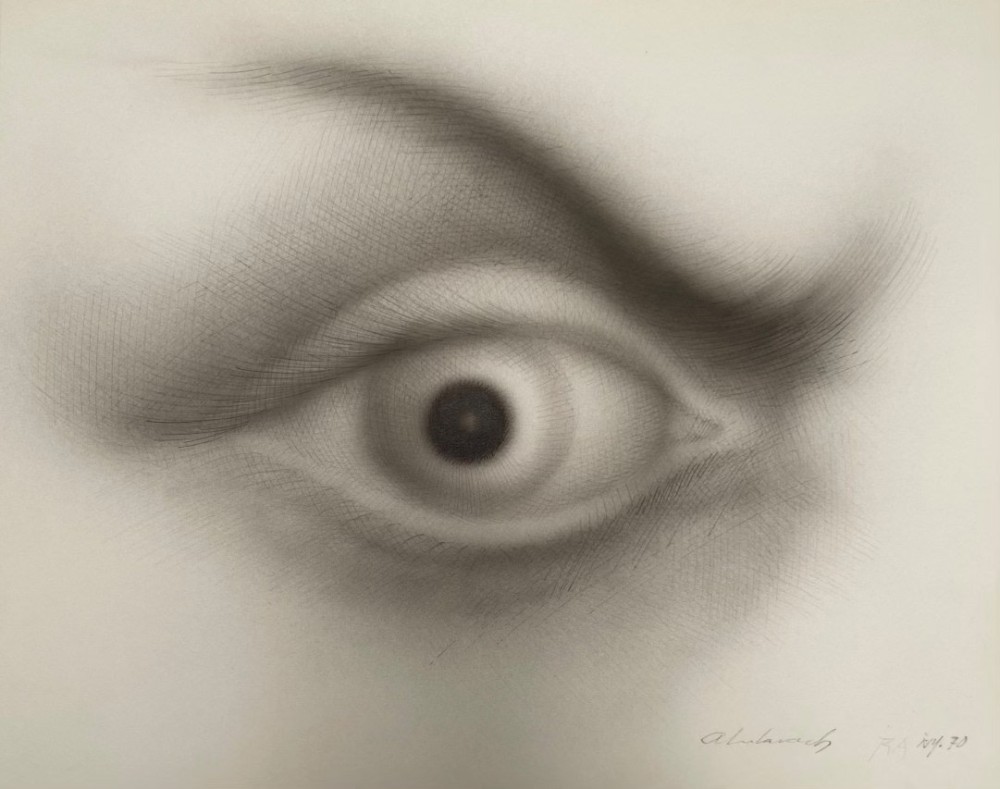
RODOLFO ABULARACH
The eye is the most expressive part of the body...the window of being. It has an internal and external space and contains all possible meanings. It is a world in itself...an object of concentration.
- Rodolfo Abularach
Born in Guatemala, Rodolfo Abularach (1933- 2020) is one of Latin America’s most distinguished masters, best known for his dramatic close-up renditions of human eyes, an image that gripped the artist for two decades.
Abularach’s fixation with the enigmatic eye began in the mid-1960s. He saw the eye as the most expressive part of the body and therefore a visual doorway to the mysteries of the psyche. Abularach explained, “the world outside didn’t interest me as much as the world inside [that] I have always tried to find within myself.” The possibility of infinite variations within one image was another fascination for the artist. With the eye, Abularach could create endless reiterations, each with distinct and profound expressions ranging from anger to love, indifference, suspicion, distrust, or even madness. Abularach used a variety of styles including hyper-realistic, abstracted, monochromatic, and multicolored, exploring the image in diverse mediums including painting, drawing, and printmaking.
In addition to being a visual artist, Abularach studied Mayan and Greek mythologies, yoga, and meditation. His interest in the esoteric and the eye fed the same compulsion to transcend space and time by accessing something beyond his external reality. Abularach continued creating eyes into the 1980s when he then shifted his focus to volcanoes. Like the eye, he saw the volcano as a transcendent portal and energy center. Growing up in Guatemala City, a valley surrounded by volcanoes, the symbol further served as a connection to home and ancient history. The artist stated, “I am inspired by both the archaic past and the chaos of the present. I am interested in universal human, themes.”
Abularach showed remarkable draftsmanship skills from a very young age and began his formal training at the age of 13 in Guatemala City. In 1958, he received a grant to continue his fine art studies in New York City. With a succession of additional prestigious grants, he remained based in New York for the next 40 years until 1998 when he fully resettled in Guatemala. Rodolfo Abularach’s work is present in many important collections including the Metropolitan Museum of Art, New York; Museum of Modern Art, New York; Museum of the Americas, Washington, D.C.; High Museum of Art, Atlanta, Georgia; Museum of Modern Art, Bogota, Colombia; Museum of Modern Art, Guatemala City; Museum of Contemporary Art, Sao Paulo, Brazil; San Francisco Museum of Modern Art; Los Angeles County Museum; and the Museo del Barrio, New York, among others.